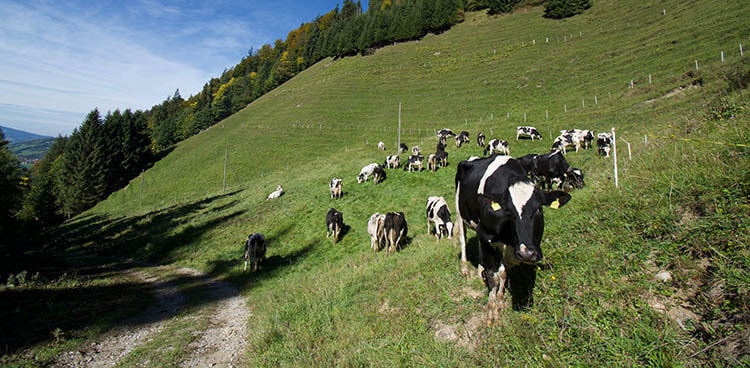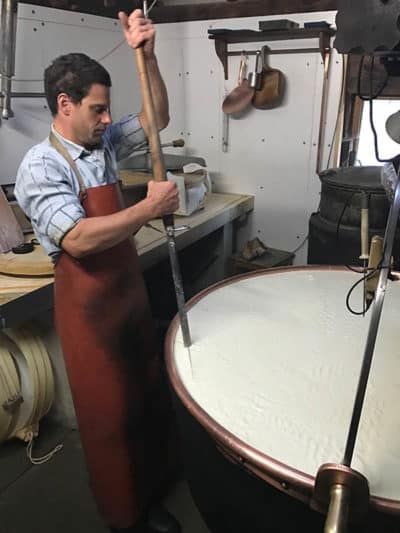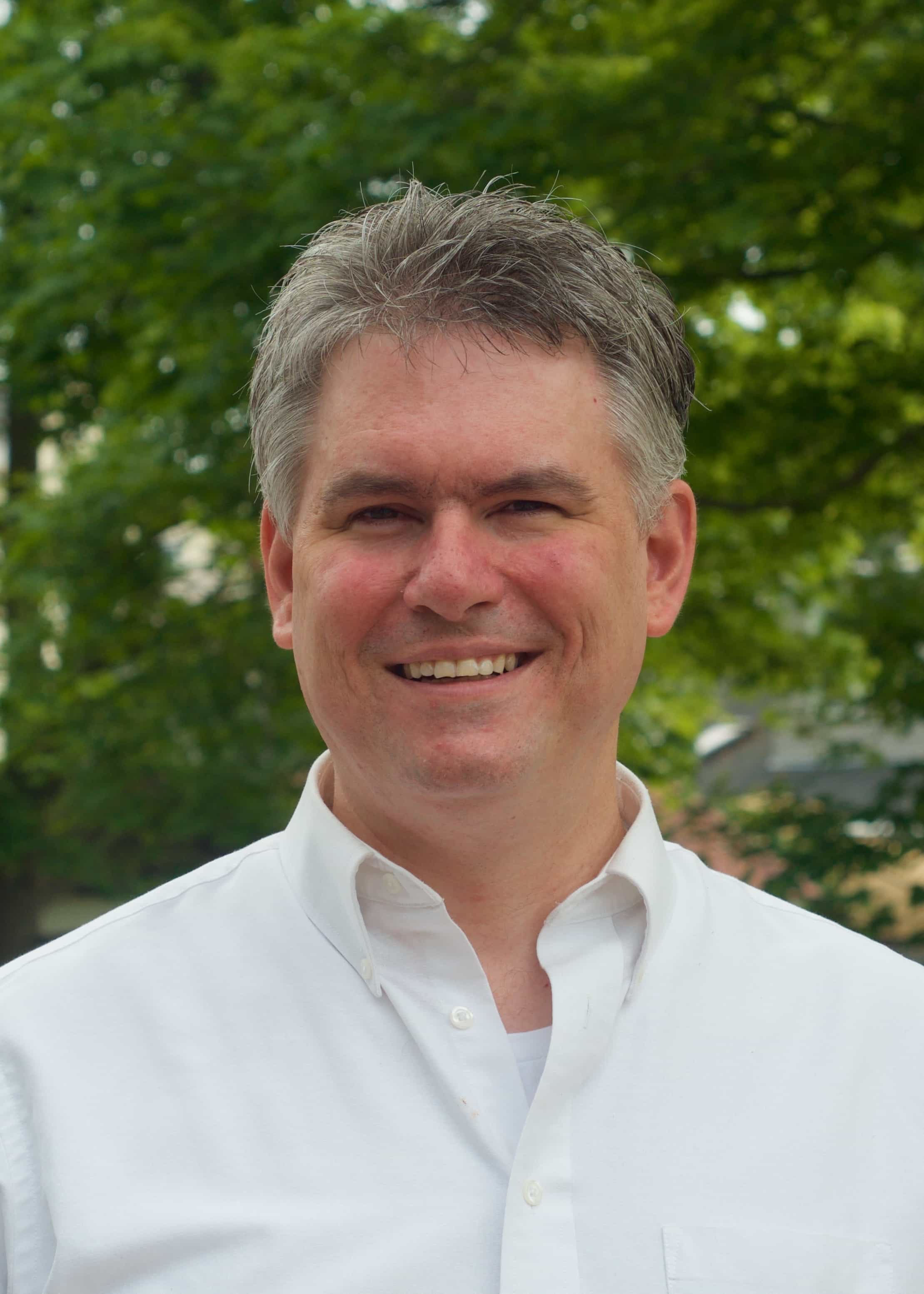
In a small cabin 5000 feet up Alp Vounetz in Fribourg, Switzerland, a man submerges his chest and arms into a giant copper vat of nearly-scalding curds and whey. Using a hemp cloth, over a 100 pounds of curds are scooped up. Pulleys and sheer strength swing the soaking wet bundle over to a mold waiting on a workbench. As the curds settle in to drain, the man in the red leather smock laughs and wipes his brow. Another day of making cheese is well underway.
To watch Béat Piller make cheese is to witness how alpine Gruyère has been made for centuries. With his parents Denise and Germain, he operates one of 54 chalets d’Alpage producing Gruyère d’Alpage AOP today. Making cheese has been a lifelong affair, starting in 1999 when he was 16 years old. His sister is a farmer. Agriculture is in his blood.
It is a physically and mentally demanding lifestyle. The day starts at 4:30 am, with the first milking and ends around 9 pm. This happens every day for the five months or so they occupy the alpine pastures. There are no vacations and little rest. The constant activity provides Piller with a strapping physique and clear sense of priorities. Even his mother Denise, now in her 70s, helps every day—hauling buckets and building fires. Why? “If I stop, I die,” she says half-jokingly. Recently Piller hired a full-time assistant to take some load off his aging parents. He still enjoys their company. “It’s good to work with family,” he says.
Beyond the rigors of maintaining nearly three dozen milking cows (all with black markings because Piller wanted a uniform herd color), a seasonal homestead, and a business, Piller must also abide by the strict parameters that govern Gruyère d’Alpage AOP production.
Every aspect of alpine Gruyère production is defined and regulated by the Swiss AOP (Appellation d’Origine Protegée). From animal diet to firewood restrictions, all details are considered. One of them is the milk used for alpine cheese must originate within 12 miles of where the cheese is made. This rigid adherence exists to protect both the alpine ecosystem and the cheese’s unique characteristics and history.
The wheels of Gruyère themselves are also regulated. When first made, the wheels weigh approximately 50 kg (110 lbs) but lighten as they dry and age—finishing somewhere in the AOP-required range of 20-35 kg (44-77lbs). They must be in the care of an affineur for three months, at which time they are evaluated and scored. Those which pass muster are sent to aging caves to complete their development and be sold.
Because only traditional methodologies are allowed, alpine cheesemaking is arduous and slow work. A village dairy might produce 7-10 wheels of cheese a day. Piller manages two, and that takes most of the morning. With a projected 2017 production of just over 529,000 kg (116,3800 lbs) of Gruyère d’Alpage AOP cheese, it’s important to remember that represents merely 1.8% of the year’s total Gruyère cheese production.
As with all Gruyère d’Alpage AOP cheesemakers, Béat is allowed to keep only 4% of his production for personal use or to sell. Everything else goes to an affineur. If the cheesemaker wants more of his own cheese, he must purchase it back.
As the season progresses talk begins of when to move the herd to their valley home for the winter. While the journey will take the effort of the entire family and around eight hours to complete, Piller looks forward to spending winter with his wife and four children. He’ll miss the mountain, though. Once the cows have departed for the season Piller refuses to return to the cabin, even if there is still cleaning or repair work to be done. “The chalet is too cold without the cows.”

Piller’s nearly three dozen milking cows are all with black markings because he wanted a uniform herd color.
He finishes the day’s wheels around 11 am. There’s just enough time for a small glass of wine to toast my visit. We talk for a few minutes, and then it’s back to work. The herd needs tending to, cabin roof needs repairing, field stakes need to be moved…
Would he change his life if he could? Piller wouldn’t have it any other way. “I would do it all over again,” he firmly asserts. “I am lucky.”





